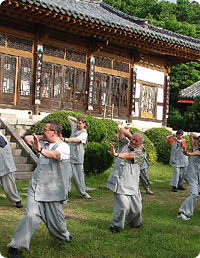SPECIAL INTEREST
Korean Wave 7 days
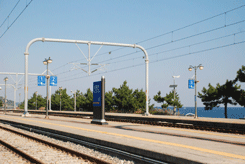
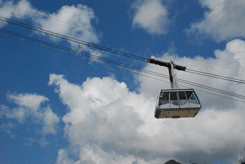
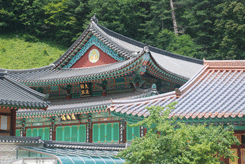
Tour Highlights
- Gyeongbokgung Palace
- National Folk Museum of Korea
- Insadong
- Gwangjang Market
- Nami Island
- Soyang Dam
- Sinheungsa Temple
- Gwongeumseong Fortress
- Unification Observatory
- Kim Ilsung Villa
- Geojin Fishing Village
- Seoraksan National Park
- Naksansa Temple
- Woljeongsa Temple
- Ojukheon Museum
- Chamsori Museum
- North Korean Submarine
- Jeongdongjin Station
- Hwanseongul Cave
- Silleuksa Temple
- Korean Folk Village
Click on the days to access the programs quick
| Days | Visits and Activities | Distance |
| Day 1 | Arrive Seoul | 60km |
| Day 2 | Seoul | |
| Day 3 | Seoul - Nami Island - Chuncheon - Seoraksan | 260km |
| Day 4 | Seoraksan - Goseong - Hwajinpo - Geojin - Seoraksan | 140km |
| Day 5 | Seoraksan - Odaesan - Gangneung - Jeongdongjin - Taebaek | 260km |
| Day 6 | Taebaek - Yeoju - Yongin - Seoul | 280km |
| Day 7 | Departure | 60km |
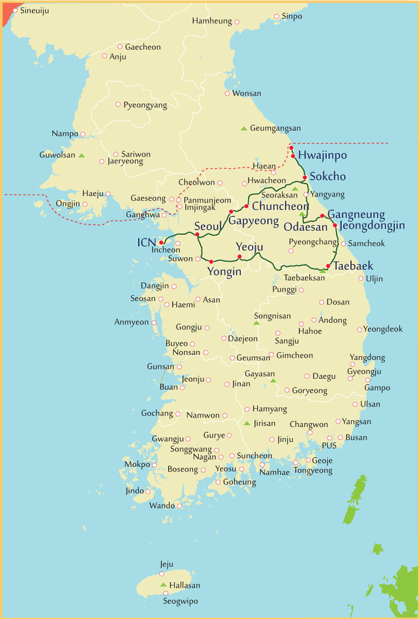 Day 1 Arrive Seoul (- - -)
Day 1 Arrive Seoul (- - -) 60km
Touching down at Incheon International Airport places you in the heart of Korea. After you clear Passport and Customs control, you will be welcomed by the tour guide and then transferred to your hotel.
Day 2 Seoul (B)
Your exploration this morning begins with a driving tour of Seoul, featuring sites such as Seoul Plaza, City Hall, Cheonggye Square and pedestrian-friendly Gwanghwamun Plaza that is hemmed in on both sides by rushing traffic and office buildings. The plaza is lined on each side with 365m long streamlets, two centimeters deep and one meter across, the stone bed of the plaza's east side waterway engraved with important events in chronological order from 1392 to 2008.
Standing high on a stone pillar is a statue of Yi Sunsin who had engaged in twenty-three naval battles and emerged victorious in all of them during the Hideyoshi invasion (1592-1598). King Sejong who propagated the Korean alphabet in the 15th century is also honored with prominent statue. On August 16, 2014, Pope Francis celebrated Mass in this plaza to beatify 124 Korean martyrs. Near the southwest corner of the plaza is Korea's Kilometer Zero, marking the distances to 64 cities around the world, including Seoul's antipode, Montevideo, Uruguay, 19,606km.
Step back in time to when life was gracefully slow and discover Gyeongbokgung Palace, a particularly charming spot that represents a colorful and turbulent side of the capital's 500-year history. Depending on timing, you may witness the Royal Guard Changing Ceremony featuring parade, password verification, duty shift and patrolling the gate. Accompanied by a court band with its colorful costumes and royal flags, the ceremony is performed daily basis at 10:00 and 14:00 except Tuesdays, although it is cancelled in case of rain or extremely hot or cold weather.
Up from the gates is a spacious stone-paved courtyard that is fully enclosed by wooden cloisters, and at the center of which runs three footpaths through two rows of rank stones, indicating the positions of the officials with the highest rank being closer to the hall.
Standing majestically on top of a two-tiered stone platform that is lined with detailed balustrades is Geunjeongjeon Hall, where the king formally granted audiences to his officials, gave declarations of national importance, presided over large official functions, and greeted foreign envoys and ambassadors. Check out the royal throne and a large painting, depicting sun, moon, five peaks, streams and pine trees, which was the crucial signifier of the king. And up in the center of the ceiling, the bright golden dragons in bold relief indicate the presence of the king.
At the back of the throne hall is a group of court offices. Displayed in front of the King's official quarters is sundial, conceived in order to catch the shadow of the sun, which tells time and 24 periods of seasonal change from the winter solstice to the summer solstice.
Sitting on the island in the rectangular lake is Gyeonghoeru. Supported by 48 square and cylindrical massive stone pillars representing the idea of Yin and Yang, this magnificent pavilion was used for many purposes ranging from receptions to national examinations.
Gangnyeongjeon is the king's sleeping and living quarters while Gyotaejeon is the queen's domain containing a number of halls. The noted feature of these main buildings is an absence of a top roof ridge.
Amisan Garden, landscaped with four hexagonal chimneys in orange bricks, is seldom noticed by the hurried visitors. Jagyeongjeon is the queen dowager's residence. Although less colorful, it is worth noting the wall, adorned with floral designs and the chimneys with ten longevity symbols.
Hyangwonjeong features a small pond with a manmade islet that supports a beautiful two-story pavilion. Behind this serene garden is Geoncheonggung, where the king and queen could relax in peace and quiet. It was here that the first electric lights in the country were installed in 1887 after 8 years of Thomas Edison's invention and a tragic chapter in Korea's history was recorded when empress Myeongseong was assassinated by the sword-bearing Japanese assassins in the early morning of 8 October 1895, allegedly under orders from Miura Goro.
Your visit to the National Folk Museum of Korea will familiarize you with wealthy culture of this friendly and picturesque nation. It is an excellent facility to illustrate the history of traditional life of the Korean people from the prehistoric age to the Joseon dynasty. The permanent exhibition features life and work, costumes and ornaments, handicrafts and technology, educations, living quarters, dietary life, oriental medicine, performing arts and games, beliefs and rituals, and socio cultural life.
Insadong, at one time the center of traditional Korean art and antiques, features a mixture of historical and modern atmosphere representing the cultural glimpse of the nation. Clustered along the main street and alleys are lined with street vendors, wooden tea houses, restaurants and numerous galleries and shops dealing in antiques, oriental art supplies, and modern Korean art of all types and styles. Soak in the paintings, upscale artworks, antiques and potteries while you can. Get lucky and you just might meet the artist themselves. It can be plenty of fun walking on the main street, but you venture into the hidden alleys that do spring some unexpected surprises. While here, you may want to buy some souvenirs or simply wander and browse at leisure admiring cultural ambience.
Enjoy a brief visit to Gwangjang market. It is one of few markets retaining traditional Korean atmosphere. Established in 1905, the market today has 5,000 independent shops. On the market's ground level, the floor space is dominated by scores of small snack stalls selling rustic delicacies and cheap treats. Clouds of smoke billow out from the boiling pans, diverse types of pancakes sizzle on hot iron grills and the smell from the eateries filling the air. The roadside vendors hawking everything from food, fruits, vegetables to seafood and an entire upper level dedicated to high quality silk, satin, and linen. Try out some sorts of Korean snacks and see a side of regular Seoul life.
Drive past Cheonggyecheon Stream. After the Korean War (1950-1953), more people migrated into Seoul to make their living and settled down along the stream in shabby makeshift houses. The accompanying trash and waste, and deteriorating conditions resulted in an eyesore for the city. The stream was covered with layers of concrete in the mid 1950s and roadway until the massive urban renewal project freed it in 2005. Today, a 5.8km creek tumbles gently through downtown Seoul, providing a much needed source of peace and relaxation for the citizens of this fast-paced city.
You will also view Dongdaemun which once served as the east gate of Seoul and a block away is DDP of a distinctively neofuturistic design. Characterized by the "powerful, curving forms of elongated structures", it ramains as a major urban development landmark of Seoul.
Day 3 Seoul - Nami Island - Chuncheon - Seoraksan (B) 260km
Depart early this morning to arrive in Seoraksan national park. Stop at Nami Island, the filming site of the popular Korean drama serial, "Winter Sonata". This is where the two main characters fell in love. Relive the scenes from the show as you stroll down the romantic tree paths. A total of five beautiful tree-lined roads polish the island. In particular, Metasequoia road, known as Winter Sonata Road, where the actor and actress enjoyed playing in the snow, a thatched adobe house, the dram-themed cafe, and autographed memorabilia of popular movie and TV stars from the series are among the highlights of the visit. Walking into the island along the straightway starting from the wharf, you can find a grave of wartime hero Nami this island named after. A phrase of his poem which is familiar with the Korean is handed down that 'Not subjugating the whole country as a man, who on earth will call him a hero?
Then, on to Chuncheon, a city of scenic lakes, making it one of the most beautiful cities in Korea. Orientation city tour covering Myeongdong. It is more popular with Dakgalbi, a city's specialty. The sizzling sound and spicy aroma stimulate your appetite and the busiest commercial center. Stop off at Soyang dam whose bank measures 123 meters high and 530 meters long, keeping 3 billion cubic meters of water and producing an annual electricity output of 350 million KWs.
Seoraksan national park is a place that you can definitely find lots of outdoor activities to make it worth while for an extended stay. Rugged peaks, fantastic cliffs, numerous waterfalls, unique rock formations, and scenic valleys altogether make this park and surrounding area some of the most beautiful sceneries on the Korean peninsula, and give this area an unparalleled popularity around the year.
Day 4 Seoraksan - Goseong - Hwajinpo - Geojin - Seoraksan (B) 140km
You will marvel at one of the largest bronze statues in Korea, Unification Buddha symbolizing Korean people's hope for reunification of the country. The statue towers over 10 meters high and sits on a lotus pedestal, which is flanked with 16 inscribed panels describing the entire path of Buddha's enlightenment. A little further on is Sinheungsa dating back to AD 652. Situated at a fork in the scenic trails, it is believed to be the oldest Zen temple in Korea.
Explore Gwongeumseong on a cable car that picks you up at the valley floor while enjoying the panoramic view of the entire valley. The peak is surrounded by cavernous drop-off cliffs, cloaked in more towering rocky summits. Definitely, you stand in awe on the top: sweeping panoramic views of the park around you, the Pacific Ocean, and the small beachside town of Sokcho. Be careful as always as there is not much room to move about and people constantly going up and down and moving around.
At the northern tip of the east coast sits Unification Observatory. With the entry permit and sign to place in the vehicle window ready, continue towards the north, driving past lots of tank traps comprising large lumps of concrete set on either side of the road, all a strange and eerie reminder of the tensions that exist between the two Koreas and the stark reality of the divided country. While there, you will get a glimpse of the much talked about border dividing the two Koreas and see the road and train track stretched side by side ahead across the North Korea.
Hwajinpo is a charming coastal town located by the scenic lagoon edged by sweetbriers and reeds. Stop at Kim Ilsung villa not to glorify him but to learn Korea's complicated history. It is where Kim Ilsung and his family spent their summer holidays until 1950. The villa displays photos and documents chronicling his life and modern Korean history. When the Korean War ended in 1953, the border between the Koreas was redrawn, and the Hwajinpo wound up in the South.
Next, enjoy a short tour of Geojin fishing port where the quaint charm of this coastal town captivates visitors. As you stroll down the quayside, check out the boats sailing in and off, drying fishes in the sun, fishermen tending their nets and, on the sleepy roadsides off the dock, elderly women selling fishes - a delightful treat to a rural lifestyle.
Day 5 Seoraksan - Naksan - Odaesan - Gangneung - Jeongdongjin - Taebaek (B) 260km
En route stop at Naksansa temple from the 7th century. In April 2005, the temple with all the surroundings was burned to the ground. Today, 12 temple buildings and facilities were restored. Exquisitely decorated, the hall is full of statues of the Bodhisattva in various poses, and you will appreciate the skill of Korean woodcarving. There is a fine 6.2 meter-tall seven-story stone pagoda that is believed to have been erected in the 15th century.
Built on the edge of the cliff, Hongryeonam is among the popular spots in the temple. There is a cap on the floor-open it for an unimaginable sight. You can see the surging waves constantly and mercilessly crushing against the cliff. The sound of waves crashing goes up into the temple and the fresh sea air also fills the temple. Near hermitage is Uisangdae pavilion perched on top of a cliff by the sea, where Uisang used to sit and meditate.
Travel over the scenic Jingogae road to enjoy the wonderful colors as the season changes - Pink azaleas decorating the valleys, the thick forest and crystal clear stream water cooling off the summer heat, the fantastic autumn foliage putting on a brilliant show of color and the snow creating a sublime scenery. Visit Woljeongsa temple from the 7th century. You will pass under the Boje-ru, which is adorned with various guardians to gain access to the temple courtyard. Straight ahead, you will immediately notice the nine-story, octagonal shaped, stone pagoda from the Goryeo Dynasty. The uniquely shaped pagoda is not only the main highlight to the temple, but it’s also National Treasure. Wind chimes hang on each corner of the pagoda, while a seated stone Bodhisattva is situated out in front making an offering. Another amazing part of the temple is the 800-meter path arched by tall fir trees. The trickles of stream and fresh yet musky fir trees small add the pleasure of your visit.
Your tour stops at Gangneung, a charming coastal city and the home of the famous Confucian scholar Yi Yulgok (1536-1584), who emphasized the primacy of 'Ki' (vital force), claiming it was the controlling agent and prime mover of 'I' (reason). He said 'I' was generated by'Ki' and so 'Ki' was responsible for the generation, maintenance, and purification of the values of the mind. He lived with his mother, Sin Saimdang. Sin Saimdang was not only an ideal daughter, wife, and mother, but also a talented painter, calligrapher, and poet and as such, she is the most widely acclaimed woman of the Joseon Dynasty.
Today, his home, Ojukheon, is the most popular landmark of Gangneung. The Gangneung Museum in the same precinct of Ojukheon is an excellent facility displaying 3,000 objects of prehistoric age and folk arts and Dano festival in diorama. Gyeongpodae is a charming beach loved by many. There is a Chamsori museum featuring 170 phonographs, some of which are invented by Thomas A. Edison (1847-1931) himself and several other antique items.
Drive past the salvaged North Korean submarine that is on display together with retired Korean navy ship. The three armed guerillas infiltrated into the land on September 15, 1996, to spy on the naval installations in the area while the others were on standby in the submarine. However, it ran aground on September 18. The crew eventually abandoned any attempt to find their way back to the North and split up in several groups. But, one was soon spotted by a civilian who became suspicious and alarmed the authorities. Counterespionage operation was in progress for 49 days and of the 26 North Korean infiltrators, 1 was captured alive, 13 spies were shot, 11 were murdered by their colleagues and 1 reportedly escaped back to North Korea.
After a short break at Jeongdongjin, a tiny village located by the ocean with a quaint railway station of being the closest to the ocean anywhere in the world, explore Hwanseongul Cave. About 30 minute grueling uphill hike from the ticket office or a 6 minute on a mono rail gets you to a cave entrance of overwhelming size in the middle of the mountain. The cave itself is super massive and it would take well over one hour to explore. Be prepared for wet walkways, maneuvered up a narrow corridor with a rapidly flowing creek below it and hung off the side of the cave's walls above the creek. Many waterfalls are actively eroding the floor. Only 1.6km open to the public; yet that section alone will provide unforgettable memories. Cave tour is absolutely at your choice. You could opt out by staying outside, or simply relax.
Day 6 Taebaek - Yeoju - Yongin - Seoul (B) 280km
On the way, stop at Silleuksa, an unusual temple from the Silla dynasty (BC57-AD935). Most Korean temples were built high in the mountains to avoid worldly noise and trouble. But, Silleuksa is a rare temple that is perched on a riverbank amid an attractive waterfront whose cove forms a snug and cosy enclosure for this ancient sanctuary. Many pray at a beautiful seven-tier marble pagoda, that is masterfully adorned with dragon and lotus carvings. Incense burning in the temple and sights and smells mixed offer visitors a really magical experience. A 500-year-old aromatic juniper tree and a 600-year-old ginkgo tree grow on the temple grounds, and on a small hill stands a seven-story brick pagoda, the only existing Goryeo brick pagoda (918-1392).
You will then experience the heritage of the Korean people and soak up the local culture. A village entrance is marked by an eye-catching stone tower topped by a symbolic stone serving as fertility and protective totem, where people write a wish on the paper and tie to the ropes. Korean Folk Village is a functioning community displaying the diversity of Korean lifestyle and culture of several centuries ago. On entering the village, you are greeted by goofy looking group of wooden Jangseung signifying village boundary and preventing bad luck.
The village holds a wide assortment of residential structures from the straw-thatched cottages of commoners to the 99-room mansions of the noble class as well as governor's office. There are many workshops where the real artisans and craftsmen dressed in traditional costumes ply their trades, demonstrating centuries-old craftsmanship in the art of pottery, pyrography, bamboo craft, Korean paper, brassware, and many more. While strolling past the houses and workshops one by one, you will get the feeling of walking through time in an ancient village.
Depending on timing, enjoy farmer's music and dance, which has been the beloved form of entertainment of Korean people, bearing testimony to the gregarious character of Korean fun-making and festivity. Jultagi or acrobatics on a tightrope is something you cannot miss. The rope walker executes a variety of acrobatic feats on the rope, along with jokes, mimicry, or songs, while a clown engages the tightrope walker in joking banter, and a team of musicians plays music to accompany the entertainment.
You will experience some of long-observed seasonal customs, beliefs, folk games or plays that have been comprehensively reflected the daily life of the Korean people. A traditional wedding ceremony is also performed on a daily basis, although it may no longer be explicitly followed.
A traditional marketplace offers the exotic flavors of Korean cuisine from different regions. Shops stock a variety of handicrafts and souvenirs, many of which were made on the premises. With all these features combined, the tour offers a fascinating insight into the unique Korean lifestyle of the days gone by.
Day 7 Departure (B) 60km
After this wonderful trip exploring Korea and with time to reflect on your surprise in your experience, you will return to the airport in time for your flight. By boarding, you are already high above Incheon heading for home.





